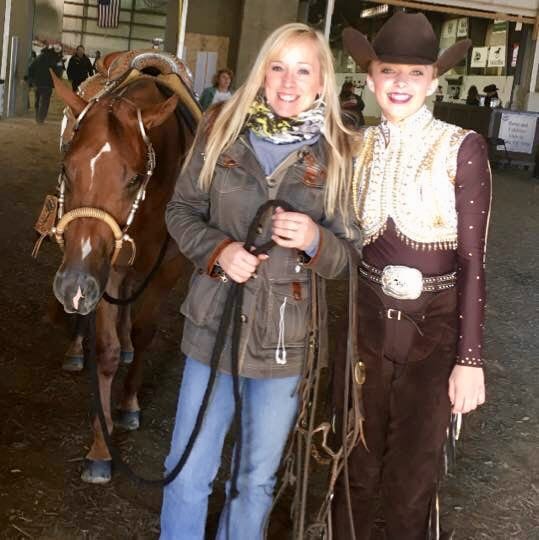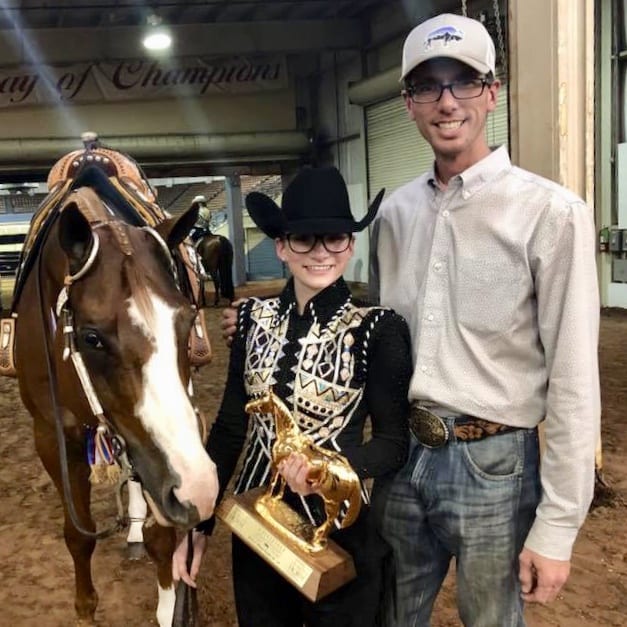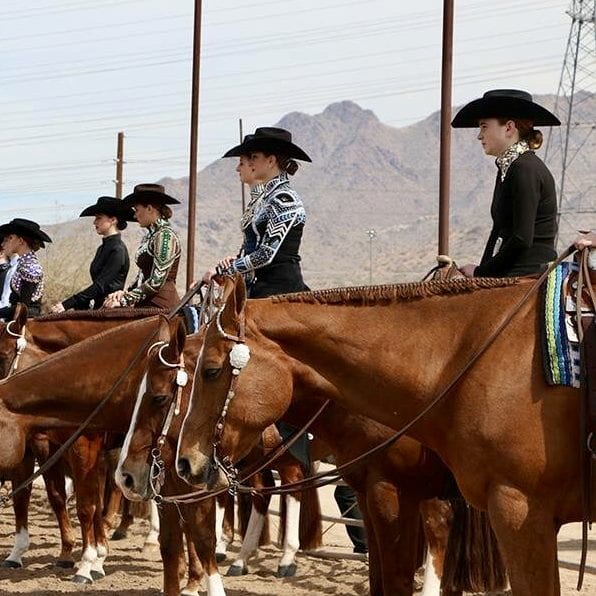In the world of horse showing, we all know too well that not every show day is a good show day, as much as we’d like them to be.
Unfortunately, every once in a while, things may fall apart or just aren’t clicking between horse and rider.
On those days, it’s easy to get exasperated and want to throw in the towel and just start fresh tomorrow.
In some cases, that’s entirely appropriate and wise, but more often, it’s best to ride through it and do your best to salvage some positivity from the day.
Three top trainers, Shannon Vroegh, Michael Hunsinger and David Busick, shared their ideas and strategies for overcoming those especially challenging show days.
Ride it out, but don’t risk making a bad situation worse
So many factors play into each show day – many of which are out of an exhibitor’s control. Consider the horse’s mindset that day, the rider’s mindset, the show setting and atmosphere, the amount of work the team did or didn’t do before the show – the list goes on and on.
Though every horse and rider team and situation is different, both Busick and Hunsinger explain that it’s always important to take control of the few factors that we can. Mainly, they explain, a rider must learn to control their emotions.
 “When you’re tired, and your patience is running thin, that’s a good time to put a horse away,” Busick says. “If the horse is fatigued or has a bad attitude, that, too, is probably a good time to stop.”
“When you’re tired, and your patience is running thin, that’s a good time to put a horse away,” Busick says. “If the horse is fatigued or has a bad attitude, that, too, is probably a good time to stop.”
Hunsinger agrees. “The last thing I want to see is somebody having a bad day, and they ride out a bad set of emotions. You’re just intensifying a situation or creating bad habits,” he says. “If you’re having such a bad day that you’re mad at the world, mad at the horse, you better hang it up and know that tomorrow’s a new day.
” Returning the horse to the stall isn’t always an option. Perhaps the struggle is happening at a show you’ve been working toward all season. In that case, Hunsinger and Busick both suggest going back to the basics.
“Break down whatever you’re doing into small steps. When you feel like the horse can conquer that and you feel his confidence and his try returning, then add a few more steps to the program,” Busick says.
 “There are days when you have to push through, keep a level head and tell yourself that just because today is a bad day, it’s not a complete loss – remember all the training, the lessons and the prep work you’ve done to get where you are. Go back and find your foundational pieces and that will more than likely bring back the pieces that are not working,” Hunsinger suggests.
“There are days when you have to push through, keep a level head and tell yourself that just because today is a bad day, it’s not a complete loss – remember all the training, the lessons and the prep work you’ve done to get where you are. Go back and find your foundational pieces and that will more than likely bring back the pieces that are not working,” Hunsinger suggests.
In her experience, Vroegh has found success by giving the horse and exhibitor a break when emotions are running high.
“Almost always, I try to ride through difficulty. There may be some instances where I decide we get down and longe and try whatever was frustrating again later. I’ve found that by taking a horse out to lunge – whether he needs it for freshness or not – just trotting around gives them a new mindset, and it gives the customer a break,” she says. “They probably both need that break from mental frustrations.”
One thing never to push through, though, is a health or soundness concern.
“When it comes to soreness or lameness, don’t even try. When it comes to the longevity of that horse, there’s always another horse show. Don’t push it past the physical capabilities that your horse has to get through the class,” Hunsinger warns. “If I’m sore and I have to go in and work, man, it’s going to make me resent it.”
Don’t let stress get the best of you
 On show day, when nerves, excitement and long-sought-after aspirations collide with a horse that may be demonstrating a less than stellar attitude or amount of try, things can get stressful. A rider may not recognize how much their response to that stress can impact their show day.
On show day, when nerves, excitement and long-sought-after aspirations collide with a horse that may be demonstrating a less than stellar attitude or amount of try, things can get stressful. A rider may not recognize how much their response to that stress can impact their show day.
“Everybody handles show stress a little differently. Some people get in there and freeze and, from the rider’s perspective, things become the horse’s fault. But, as the trainer, you’re standing there and saying ‘well, you didn’t cue the horse,’” Hunsinger says. “You have other riders that want to pick, pick, pick and never give the horse the opportunity to show.” Still, others get in their own head. What may have been a perfect go gets prematurely mucked up by a rider who overthinks or who plays mind games with themself.
“You have practiced and practiced. You have ridden that pattern over and over. The pattern is no different – it’s the same arena, the same people around, the same dirt, the only thing different is you’ve put on different clothes. Don’t get wrapped up in ‘oh my goodness; I’m at a horse show, I’m showing.’ Don’t lose sight of what you’ve prepared for,” Hunsinger says.
Being aware of how you respond in stressful situations with your horse is the first step toward combating that response. Once you recognize what your response is and how it impacts your horse and your ride, you and your trainer can start trouble-shooting and hopefully avoid future rough show days.
End on a positive note
Perhaps the most beautiful and enjoyable thing about showing horses is the rapport and relationship that is built between horse and rider. For the sake of that relationship, it’s important to give your horse and yourself a clean slate with each ride. Don’t let one episode or a bad day carry into the future.
“Horses have a brain of their own, and there are good days and there are bad days. Say it’s a green horse or a horse that has picked up some bad habits in the show pen. You might be having a terrible day, but look for something that is reassuring to the confidence of that horse so that you get to end on a positive note,” Hunsinger says.
“Once you’ve done that, relish the feeling that you’ve conquered your goals and finished your exercise confidently,” Busick says.
Be proactive to ensure a great show day
Vroegh and Busick both stress the importance of being proactive to help ensure a great show. Both shared tips for doing so.
“Keep a positive attitude and remember there’s nothing we can’t conquer,” Busick says. “Do your homework and be prepared; what will happen will happen. Know you’re doing everything on your part to make it a positive show day.”
Vroegh adds some logistical tips to remember. “Recheck that you have everything one more time before you leave for the show. Be ten minutes early because something always comes up, and, Vroegh laughs, “use the bathroom before you put your chaps on.”
About the author: When she isn’t wrangling 12 and 13 year-olds in her middle school English classroom, Megan Ulrich enjoys riding, showing and judging horses. She lives in Holmen, Wisc., with her husband, daughter, three dogs and two horses. She earned her journalism degree from the University of Wisconsin-Madison.









